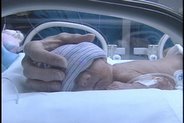Among the problems facing health care workers is the virus’ ability to remain asymptomatic for up to 21 days. Furthermore, researchers do not know why some people recover from Ebola hemorrhagic fever, while most do not. There is no standardize treatment for Ebola and researchers do not yet know the natural reservoir for the virus.
Is Ebola transmitted via the air? In primates the Ebola virus was transmitted through the air in a research facility in 
According to existing literature, Ebola does not spread through the air in natural settings, although it can be spread via aerosols in lab experiments. How the virus knows when it is in a lab, I’m not certain. Viruses rely on sugars and proteins that allow them to bind to cells they’d like to infect. Small changes, such as the mutation that permitted airborne transmission, probably changed the lethality for humans infected by Ebola Reston, even though it retained its virulence in monkeys.
There are claims, however, that airborne human to human transmission of Ebola occurred in 1976. Reports say that Mayinga N'Seka (seen as the patient in the image to the right), a nurse in
Ebola is a mysterious and deadly microorganism. We’ve come far in understanding this killer, but as with so many viruses, we are just one shift, drift or mutation away from a potential pandemic.
(This 1976 photograph shows two nurses standing in front of Kinshasa case #3 (Nurse Mayinga) who was treated and later died in Ngaliema Hospital, in Kinshasa, Zaïre - CDC/Dr. Lyle Conrad)


No comments:
Post a Comment